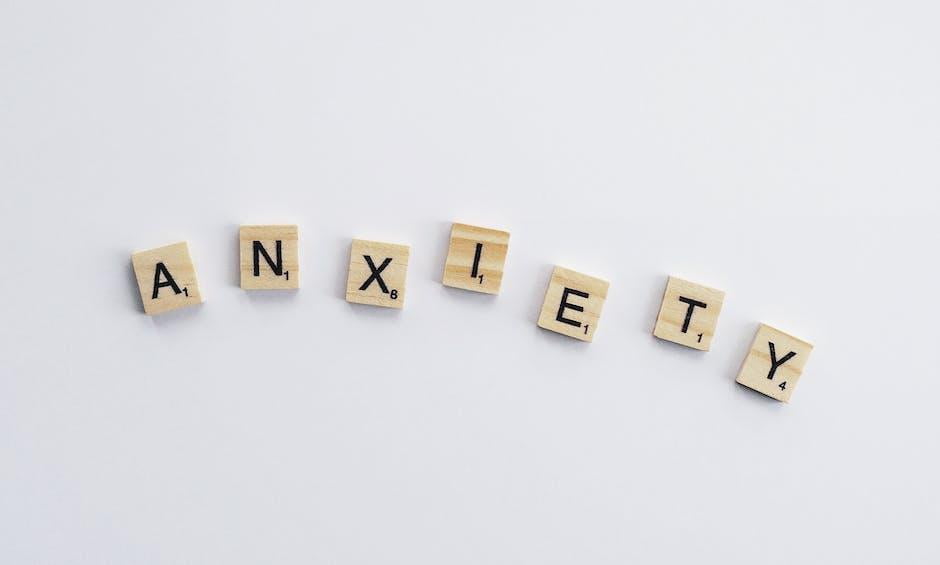Sure, let’s dive into the topic of managing anxiety and panic attacks. It’s a subject that affects many people, and understanding it can be a significant step towards better mental health. If you’ve ever felt your heart pounding, your breath quickening, and a sense of impending doom creeping in, you’re not alone. These are common symptoms of anxiety and panic attacks. But why should you keep reading? Because understanding these conditions and learning how to manage them can significantly improve your quality of life.
Key Takeaways
- Understanding the nature of anxiety and panic attacks.
- The role of medical interventions in managing these conditions.
- Self-help techniques for managing symptoms.
- Coping strategies during a panic attack.
- The importance of building a supportive network.
Understanding Anxiety and Panic Attacks
Definition of Anxiety and Panic Attacks
Anxiety is a feeling of unease, such as worry or fear, that can be mild or severe. Panic attacks, on the other hand, are intense bouts of fear or discomfort that can feel like a heart attack. They’re sudden and reach their peak within minutes, causing physical symptoms that can be quite distressing.
Common Symptoms and Triggers
Common symptoms of anxiety and panic attacks include a racing heart, shortness of breath, trembling, sweating, and a fear of losing control or dying. Triggers can vary widely from person to person, and can include stress, certain health conditions, or even certain situations or places.
The Importance of Recognizing a Panic Attack
Recognizing a panic attack when it happens is crucial. It can help you seek appropriate help and start implementing coping strategies. It’s also important to remember that while panic attacks are frightening, they’re not life-threatening.

Medical Interventions
The Role of Medications
Types of Medications Commonly Prescribed
Medications can play a key role in managing anxiety and panic attacks. These can include antidepressants, benzodiazepines, and beta-blockers. Each of these medications works in a different way to help reduce symptoms.
Importance of Adherence to Prescriptions
It’s crucial to take your medication as prescribed by your healthcare provider. This can help ensure that the medication is effective and can reduce the risk of side effects.
Understanding Boxed Warnings
Boxed warnings are serious warnings about potential risks and side effects of medications. It’s important to understand these warnings and discuss any concerns with your healthcare provider.
Seeking Professional Counseling
How Counseling Can Help
Counseling can provide a safe space to explore your feelings and learn coping strategies. It can also help you understand the root causes of your anxiety and panic attacks.
Different Types of Therapy for Anxiety and Panic Attacks
There are several types of therapy that can be effective for managing anxiety and panic attacks, including cognitive-behavioral therapy (CBT), exposure therapy, and dialectical behavior therapy (DBT). Each of these therapies has a different approach, but all aim to help you manage your symptoms and improve your quality of life. You can learn more about these therapies in our article on strategies for managing anxiety and panic attacks.

Self-Help Techniques for Managing Symptoms
Deep Breathing Techniques
Steps for Effective Deep Breathing
Deep breathing can be a powerful tool for managing anxiety and panic attacks. It can help slow your heart rate and promote relaxation. The key is to breathe deeply into your belly, hold for a few seconds, and then exhale slowly.
Muscle Relaxation Techniques
Guide to Progressive Muscle Relaxation
Progressive muscle relaxation involves tensing and then relaxing each muscle group in your body. It can help reduce physical tension and promote relaxation. You can learn more about this technique in our article on natural ways to relieve panic attacks.
Mindfulness and Meditation
Practicing Mindfulness to Stay Grounded
Mindfulness involves focusing on the present moment without judgment. It can help you stay grounded and reduce feelings of anxiety.
Meditation Techniques for Anxiety Relief
Meditation can be a powerful tool for managing anxiety. It involves focusing your attention and eliminating the stream of thoughts that may be crowding your mind. You can learn more about these techniques in our article on ways to de-stress and reduce anxiety.

Coping Strategies During a Panic Attack
Recognizing the Onset of a Panic Attack
Recognizing the onset of a panic attack is the first step in managing it. This can include noticing changes in your breathing, heart rate, or thoughts.
Using Sensory Engagement Techniques
Focusing on a Specific Object
Focusing on a specific object can help ground you during a panic attack. This can involve describing the object in detail to yourself.
Closing Your Eyes to Reduce Stimuli
Closing your eyes can help reduce the amount of stimuli you’re processing, which can help calm a panic attack.
Visualizing a Calm Place
Visualizing a calm place can help reduce feelings of panic. This can involve imagining a place where you feel safe and relaxed.
Physical Strategies
Engaging in Light Exercise
Light exercise, such as walking or stretching, can help reduce feelings of panic. It can help distract your mind and reduce physical symptoms of anxiety.
Keeping Lavender on Hand for Calming Effects
Lavender has calming properties and can be helpful during a panic attack. This can involve smelling lavender oil or using a lavender-scented product.
Building a Support System
The Importance of Talking About Your Experiences
Choosing Someone You Trust
Talking about your experiences with someone you trust can be a powerful tool for managing anxiety and panic attacks. It can provide a sense of relief and understanding.
How Sharing Helps
Sharing your experiences can help reduce feelings of isolation and can provide a sense of perspective. It can also help you gain insights and advice from others who may have had similar experiences. You can learn more about the benefits of sharing in our article on relieving physical symptoms of anxiety.
Repeating Mantras for Self-Support
Creating Personal Mantras
Creating personal mantras can help provide a sense of calm and focus during a panic attack. These can be phrases that are meaningful to you and that promote a sense of peace.
When and How to Use Mantras
Mantras can be used during a panic attack or as part of your daily routine. They can be repeated silently to yourself or out loud, depending on what feels most comfortable for you.
Remember, managing anxiety and panic attacks is a journey, and it’s okay to seek help. Whether it’s through medication, therapy, self-help techniques, or a combination of these, there are many ways to manage these conditions and improve your quality of life. (source: NHS, Mayo Clinic)
Soothing Your Mind: A Gentle Guide to Managing Anxiety and Panic Attacks FAQ
What are the common symptoms of anxiety and panic attacks?
Anxiety and panic attacks can manifest through a variety of symptoms, including rapid heartbeat, sweating, shaking, shortness of breath, a feeling of impending doom, and an overwhelming sense of panic. While these symptoms can vary in intensity and duration from person to person, they are often sudden and can feel quite intense.
Can anxiety and panic attacks be treated without medication?
Yes, many individuals manage their anxiety and panic attacks through non-pharmacological methods. Techniques such as cognitive-behavioral therapy (CBT), mindfulness practices, stress management strategies, and lifestyle changes like regular exercise and a balanced diet can significantly reduce symptoms. However, some people may still require medication as part of their treatment plan, and it’s essential to consult a healthcare provider for a personalized approach.
What immediate strategies can I use during a panic attack?
During a panic attack, grounding techniques can be incredibly helpful. Try focusing on your senses – name five things you can see, four things you can touch, three things you can hear, two things you can smell, and one thing you can taste. Deep breathing exercises, such as inhaling slowly through your nose and exhaling through your mouth, can also help calm your nervous system.
How can I prevent future anxiety and panic attacks?
Preventing anxiety and panic attacks involves a combination of lifestyle adjustments, stress management techniques, and possibly therapy. Regular physical activity, a healthy diet, adequate sleep, and avoiding excessive caffeine and alcohol can help manage anxiety levels. Learning and practicing mindfulness, meditation, and relaxation techniques can also equip you with tools to cope with stress more effectively.
Is it normal to experience anxiety and panic attacks?
Yes, experiencing anxiety and panic attacks is more common than many people think. It’s a natural response to stress or perceived threats. However, when these feelings become overwhelming and interfere with daily life, it might indicate an anxiety disorder. Recognizing and addressing symptoms early with the help of a professional can improve quality of life.
How does cognitive-behavioral therapy (CBT) help with anxiety and panic attacks?
Cognitive-behavioral therapy (CBT) is a highly effective treatment for anxiety and panic attacks. It works by identifying and challenging negative thought patterns and behaviors that contribute to anxiety. Through CBT, individuals learn coping strategies and problem-solving skills to manage anxiety symptoms and reduce the frequency and intensity of panic attacks.
Can diet and exercise really make a difference in managing anxiety and panic attacks?
Yes, diet and exercise play a significant role in managing anxiety and panic attacks. Regular physical activity can reduce stress, improve mood, and enhance overall mental health. A balanced diet, rich in fruits, vegetables, whole grains, and lean proteins, can also impact your mental health positively. Avoiding or limiting caffeine and alcohol intake is recommended, as these can exacerbate anxiety symptoms.
Should I avoid certain situations to prevent panic attacks?
While avoiding situations that trigger panic attacks might provide short-term relief, it can reinforce anxiety in the long term. Exposure therapy, a component of cognitive-behavioral therapy, gradually exposes you to the feared situation in a controlled and safe environment, helping you build tolerance and reduce anxiety over time. It’s important to approach this under the guidance of a trained professional.



